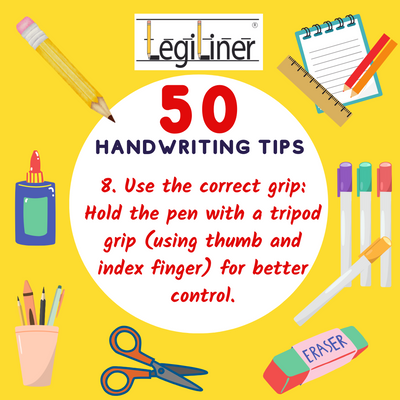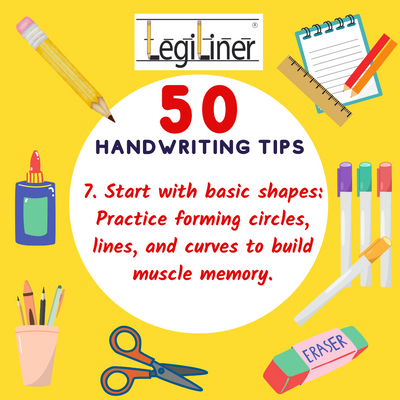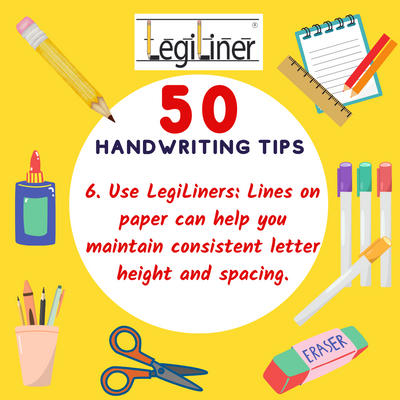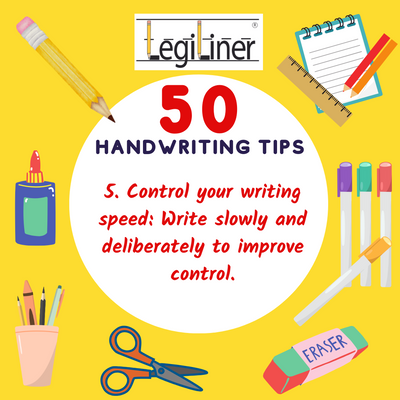The Tension Dilemma:
The way we hold our writing instruments can have a significant impact on the quality of our handwriting. In a child, the conventional tight grip, often born out of weak musculature, decreased sensory feedback or low tone, can inadvertently lead to increased tension in our hands and fingers. This tension, in turn, effects the student's writing, causing discomfort, cramping and impairing the fluidity of pencil strokes.
The Power of Relaxation:
The fourth tip in our 50 Handwriting Tips Series emphasizes the importance of a relaxed grasp when writing. By consciously holding the pencil or marker with a lighter touch, we unlock a multitude of benefits that contribute to improved handwriting:
-
Reduced Tension: A relaxed grip alleviates the strain on our hand muscles and joints, minimizing the risk of discomfort and fatigue during extended writing sessions.
-
Enhanced Control: A lighter grip often translates to better control. It allows for smoother, more natural movements, resulting in neater and more consistent lettering.
-
Improved Fluidity: Embracing a relaxed grasp promotes a more fluid writing style, making the sentences flow better on paper.
Practical Tips for Implementation:
-
Conscious Awareness: Have your student make a conscious effort to relax their grip, allowing the fingers to hold the pencil more gently.
-
Optimal efficient grasp: There are several efficient grips that are better to use: tripod grasp and quadripod grasp. It could be hard to have your student change to one of these, but it could improve their endurance for longer writing. Experiment with different grips until you discover what feels comfortable and natural for you.
-
Regular Breaks: If you find yourself reverting to a tight grip, take short breaks to stretch and relax your hand muscles. Over time, this habit will contribute to a more consistently relaxed writing comformt.
Conclusion:
The simple act of relaxing your grip can make a world of difference for handwriting endurance. There are exercises that can improve the sensory feedback to the hand, so consult an OT for ideas.













